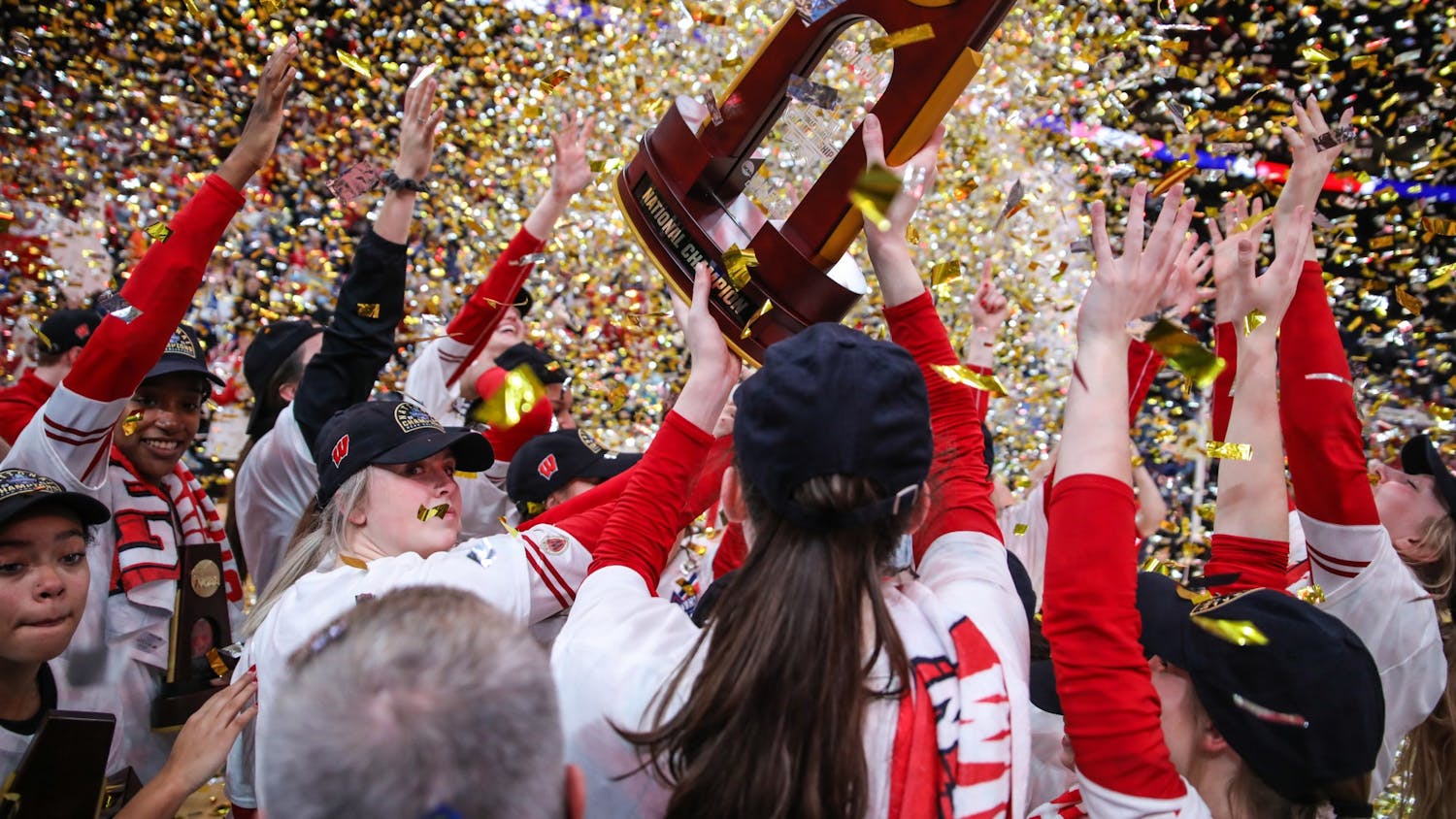Just when it looked like Wisconsin’s women’s hockey team might have a number on its border-battle rival — with wins in six of the team’s last seven meetings — Minnesota flipped the script and got revenge for last year’s NCAA tournament defeat.
Stakes were high emotionally and in the conference standings as rivals Wisconsin (2-1-0 WCHA, 8-1-0 overall) and Minnesota (4-1-1, 6-1-1) fought it out on the ice at LaBahn Arena. The No. 1 Badgers played a tough, competitive game but couldn’t make it count in a 1-0 loss to the No. 3 Gophers.
Minnesota came out aggressive in the first period, quickly tallying the first four shots on goal. At the end of the period, the Badgers had a power play and an opportunity to score but couldn’t get the puck in the net.
“[Minnesota] played a lot better than they did last weekend,” head coach Mark Johnson said. “We knew they were coming in off a loss, and we know they get excited to come down and play.”
While both teams were defending their areas well and keeping their opponents at bay, the Badgers kept switching up their lines to try and create a scoring opportunity in the second period.
“It's not just one line that it is going to come down to,” redshirt senior forward Annie Pankowski said. “I look to my left and my right [on the bench], and I'm excited for whoever coach is going to put in.”
But the Gophers played a tough game. Both teams kept the puck to the outside and made their opponents play on the perimeter. At the end of the second period, Wisconsin had 15 shots on goal while Minnesota had 16.
“There weren't a lot of second and third opportunities,” Johnson said. “You have to scratch and claw to get a chance, and both goalies played well.”
With a lot of activity up and down the ice and few scoring opportunities, the two rivals stayed scoreless until the third period when Pankowski went to the penalty box. Minnesota’s sophomore defender Emily Brown capitalized on a line change on the ensuing power play and scored with under 13 minutes to go.
“One of our players was 7 or 8 feet back as the puck went over to the young lady that scored,” said Johnson. “There was enough time and [Brown] got it off pretty quick. She saw a seam and there was an area and a lane and that's where the puck went.”
Wisconsin regrouped and put pressure on Gopher goaltender Alex Gulstene — tallying nine of its 27 shots on goal after falling behind — but couldn’t get one past the Minnesota netminder.
“It turned on a sense of urgency for sure,” Pankowski said. “I think it lit a fire for me. It sucks to be in the box and let your team down like that, but I think how we responded was really impressive.”
Although the last minute was a dogfight with players going down left and right on the ice, the Badgers, even with 27 shots on goal, couldn’t get the puck in the net and pull out a win.
“[The outcome] is frustrating, but that's hockey,” said Pankowski. “One bounce, one call can change the game.”
The two teams were nearly even in shots on goal — 26 for the visitors and 27 for Wisconsin — and scoring opportunities, and both goaltenders turned in the best performances of their seasons to date, with Brown’s one goal the only thing separating the two elite teams.
“It's Minnesota and Wisconsin,” said Pankowski. “It's always going to come down to one or two errors, one or two bounces that go your way. I think that if we are able to capitalize on and take advantage of the ones that do go our way, it'll be a lot better for us in a game that's tight like that.”





